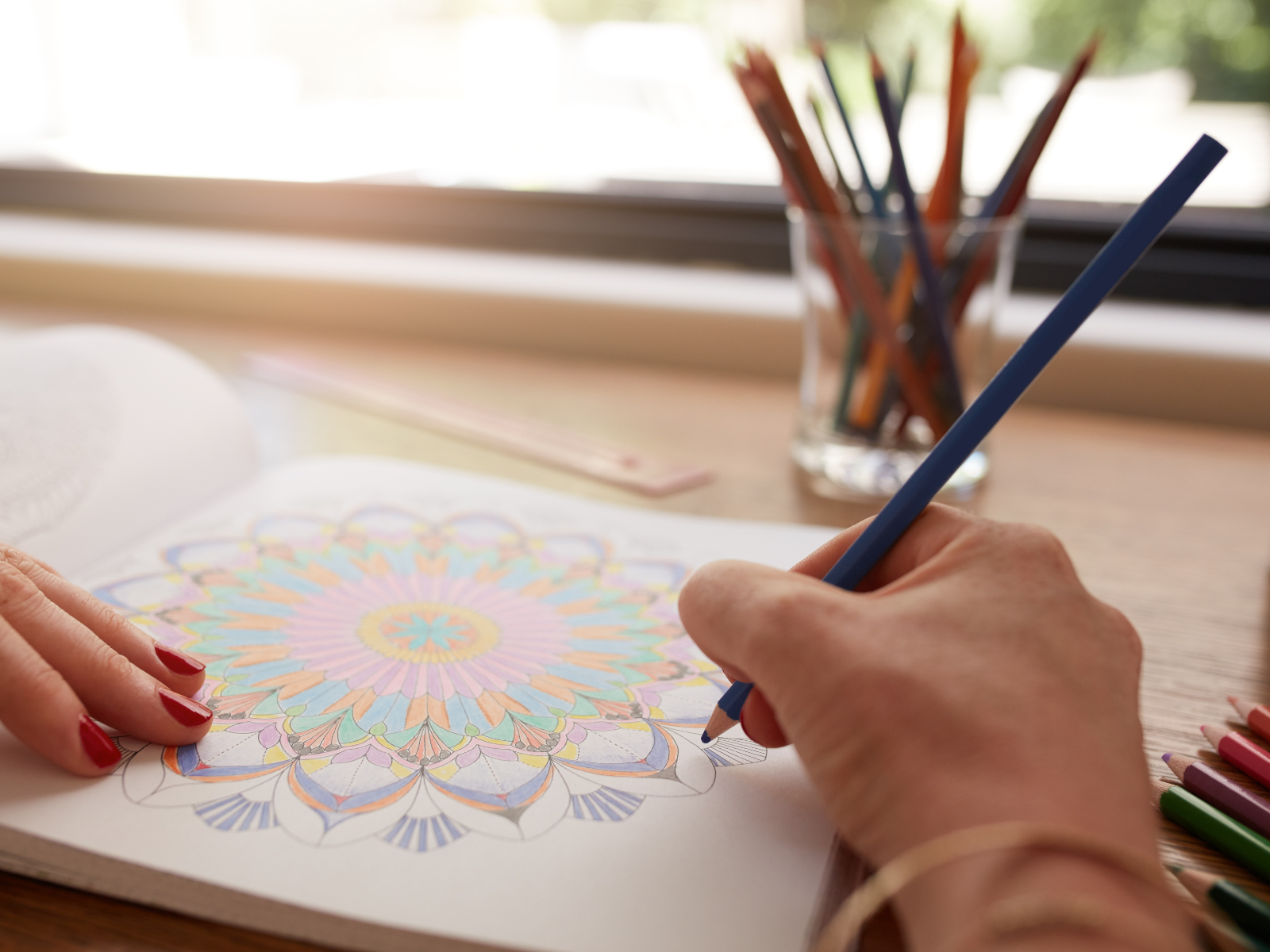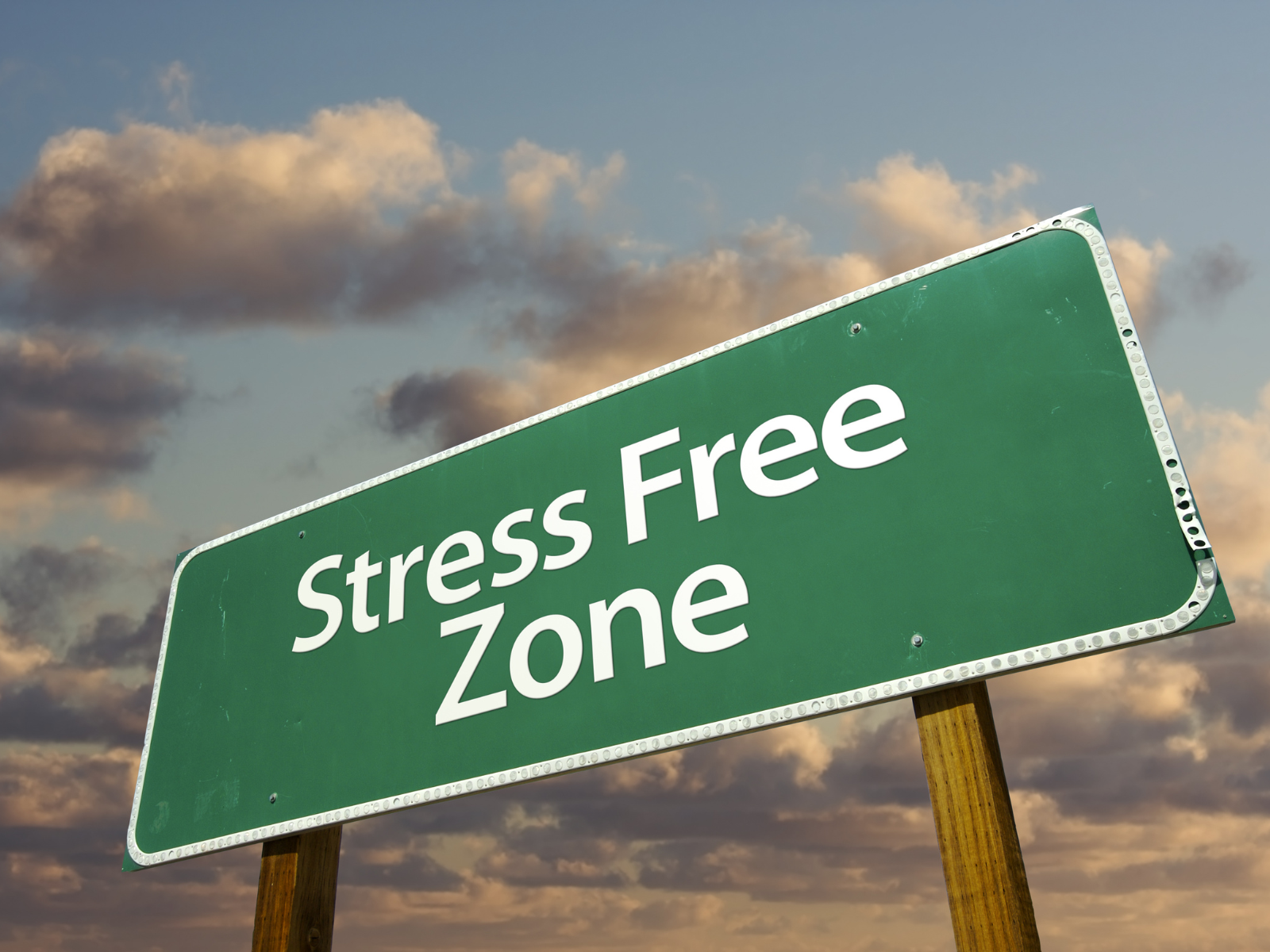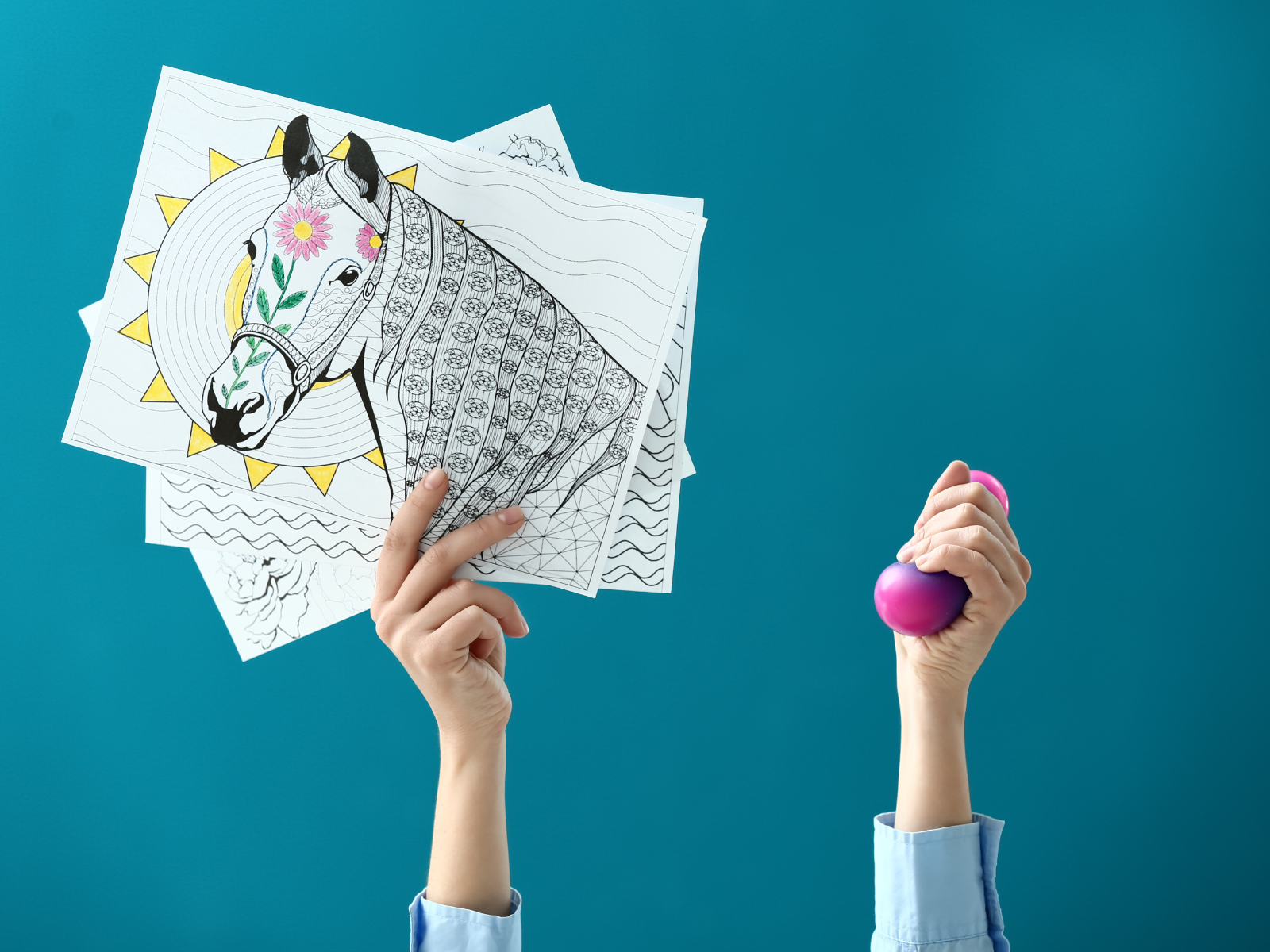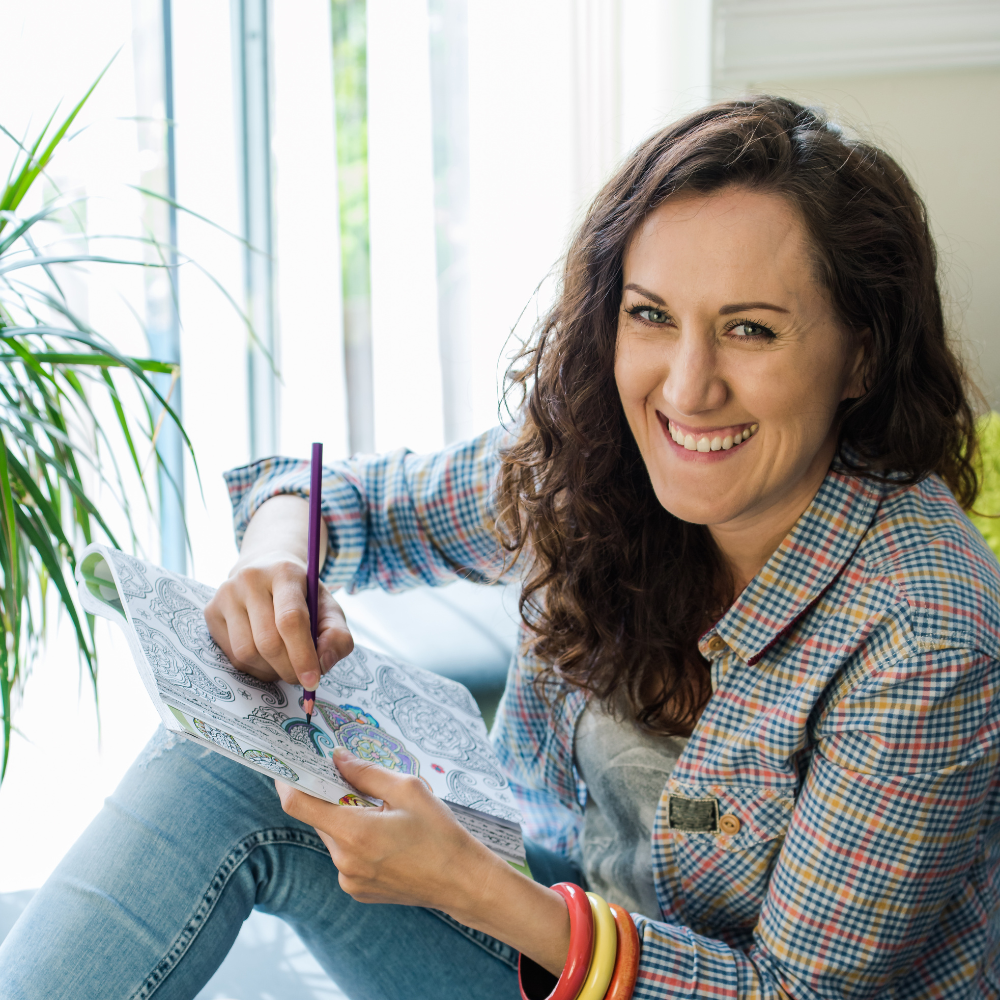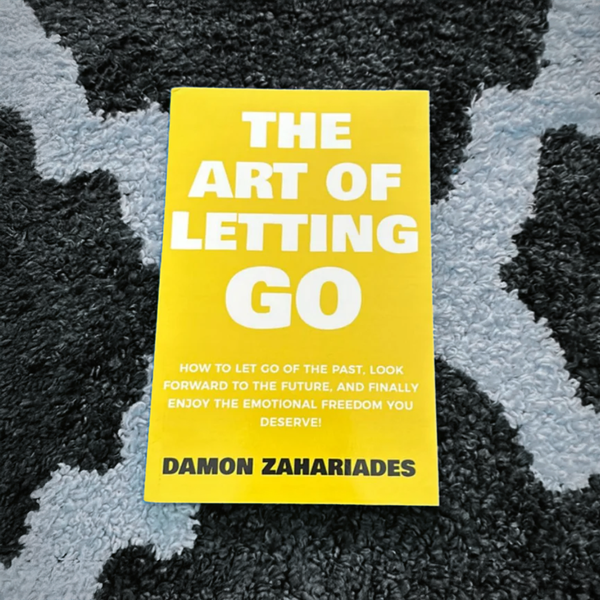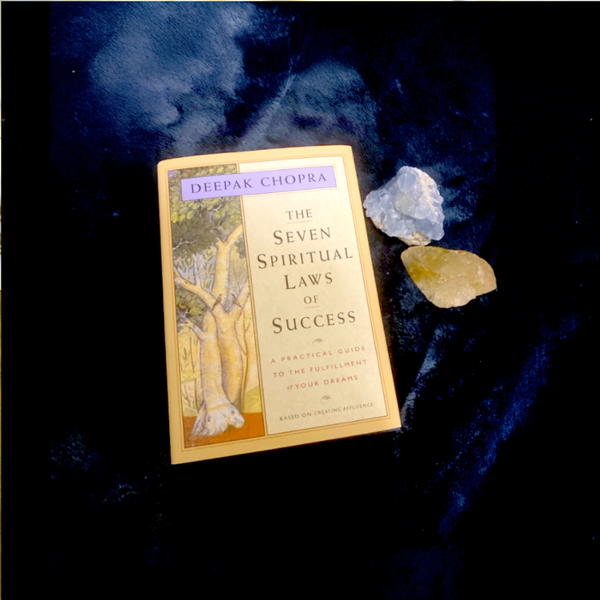Are you feeling a little overwhelmed by your to-dos and responsibilities?
Are you feeling stressed out and creatively burnt-out?
Even if you feel like your artistic skills have been dulled and overwhelmed, rekindling your creativity through art can be the best way to let go of all that stress!
Well, take a deep breath – creative expression could be your saving grace!
Yes, it's true: art is not only a powerful tool for expressing yourself but also a great coping mechanism for alleviating anxiety.
Life can be stressful and demanding at times, and dealing with stress and anxiety can feel overwhelming.
In a world where stress and anxiety seem to be the norm rather than the exception, we need to find ways to regain our balance.
One of the most powerful tools we have at our disposal is creativity.
From painting to writing, singing, dancing, and everything in between, creative pursuits offer us a unique way to express ourselves, navigate our emotions, and ultimately, heal.
By turning stress into pure motivation, you can harness the power of art to help you reach new levels of creativity and productivity.
Using art as a stress-buster allows us to disconnect from our worries and immerse ourselves in the present moment.
This mindfulness technique can alleviate tension, relieve anxiety, and provide a sense of calmness that will leave you feeling recharged and refreshed.
Not only can producing art soothe our brains and well-being, but it also opens up an incredible array of possibilities and opportunities for self-expression!
Let's look into how taking up an artistic activity can help re-frame your frame of mind and restore tranquility.
Keep reading to discover how exploring art will help reduce your anxieties – no stressing required.



The Art-Emotion Connection
Stress will affect us all at some point in our lives, and we often struggle to manage its effects.
But the great thing about art is that it allows us to tap into our emotions and express them without fear of judgment or limitation.
Art has a unique ability to act as a bridge between our inner world of feelings and the outer world of expression.
When we're stressed or anxious, it can be challenging to put into words what we're experiencing.
However, through art, we can communicate these complex emotions visually, musically, or even physically.
For example, colors in a painting can represent different emotions – blues for sadness, reds for anger, yellows for happiness.
Similarly, the rhythm and tone of a song or dance routine can express a range of feelings from joy to despair.
This non-verbal communication can provide a sense of relief and understanding that talking or thinking might not achieve.
Through the act of creating, we can release negative feelings and transform them into something beautiful.
Art offers a way for us to process difficult emotions in a healthy and productive manner, leading to increased self-awareness and emotional well-being.
By tapping into our creativity, we can release emotions and find a sense of clarity and calmness.
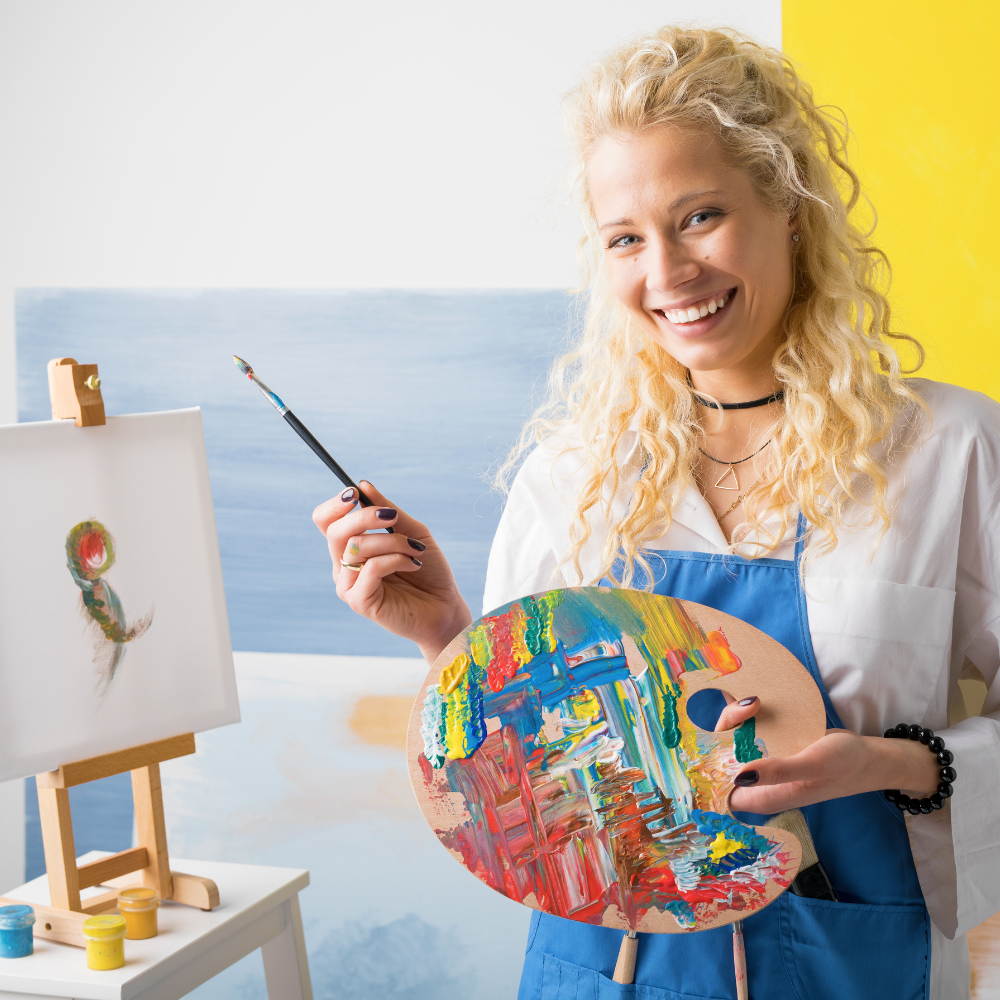


Art, Mindfulness, and Meditation
Creating art can also be a form of meditation.
When we engage in a creative activity, we often enter a state of 'flow' – a mental state where we are fully immersed in what we're doing, and time seems to stand still.
This state of flow is similar to mindfulness, where we focus on the present moment without judgment.
In other words, art can be a form of active meditation, allowing us to disconnect from our worries and find inner peace.
Furthermore, certain artistic activities, like coloring mandalas or knitting, have a repetitive nature, which can be calming and meditative.
These activities can help slow down our racing thoughts, allowing us to relax and reduce stress levels.
Through art, we can train our minds to enter a more peaceful and focused state.
Developing relevant skills through creative outlets can also have a positive impact on our overall well-being.
For instance, learning to play an instrument or taking up painting can be challenging and require concentration and patience.
The effectiveness of these activities, in turn, can boost our self-esteem and confidence, leading to a more positive outlook on life.
If you have problem-solving or decision-making skills, you'll be equipped to handle stressful situations better, too.
By engaging in these activities, we can improve our focus and develop a sense of accomplishment, which can boost our self-esteem and confidence.
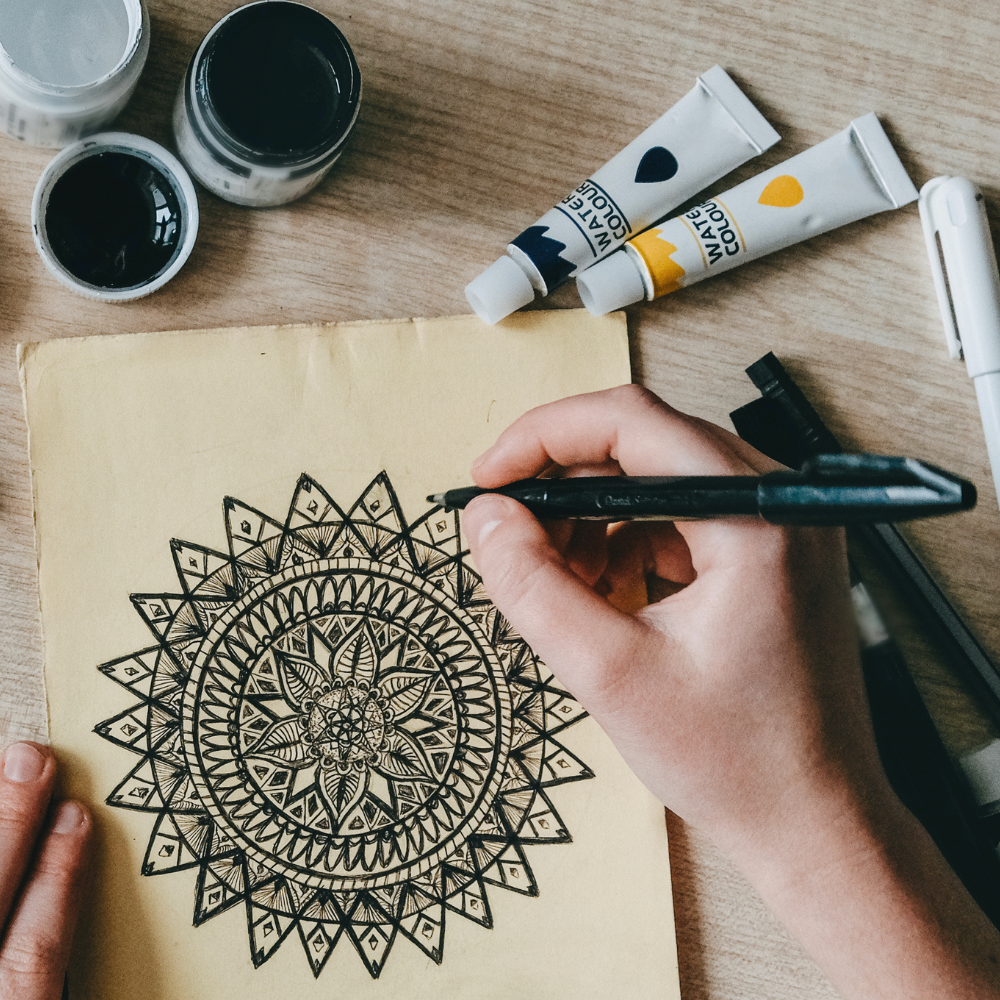


Emotional Regulation and Resilience through Art
Art can also play a crucial role in emotional regulation – the ability to manage and respond to an emotional experience in a suitable manner.
By expressing our emotions through art, we can confront and process them, rather than suppressing or avoiding them.
This confrontation and processing can lead to greater resilience, as we learn to navigate and overcome emotional challenges.
Moreover, creating art can also boost our self-esteem and confidence by giving us a sense of accomplishment and control.
By practicing self-care through art, we can build our emotional resilience and better cope with stressors in the long run.
Additionally, creating art promotes self-awareness and introspection.
As we allow our emotions to come to the surface, we can better understand our inner workings and develop resilience – the ability to bounce back from challenging situations.
Through creative expression, we can learn to cope with and regulate our emotions, leading to a healthier and more balanced mindset.
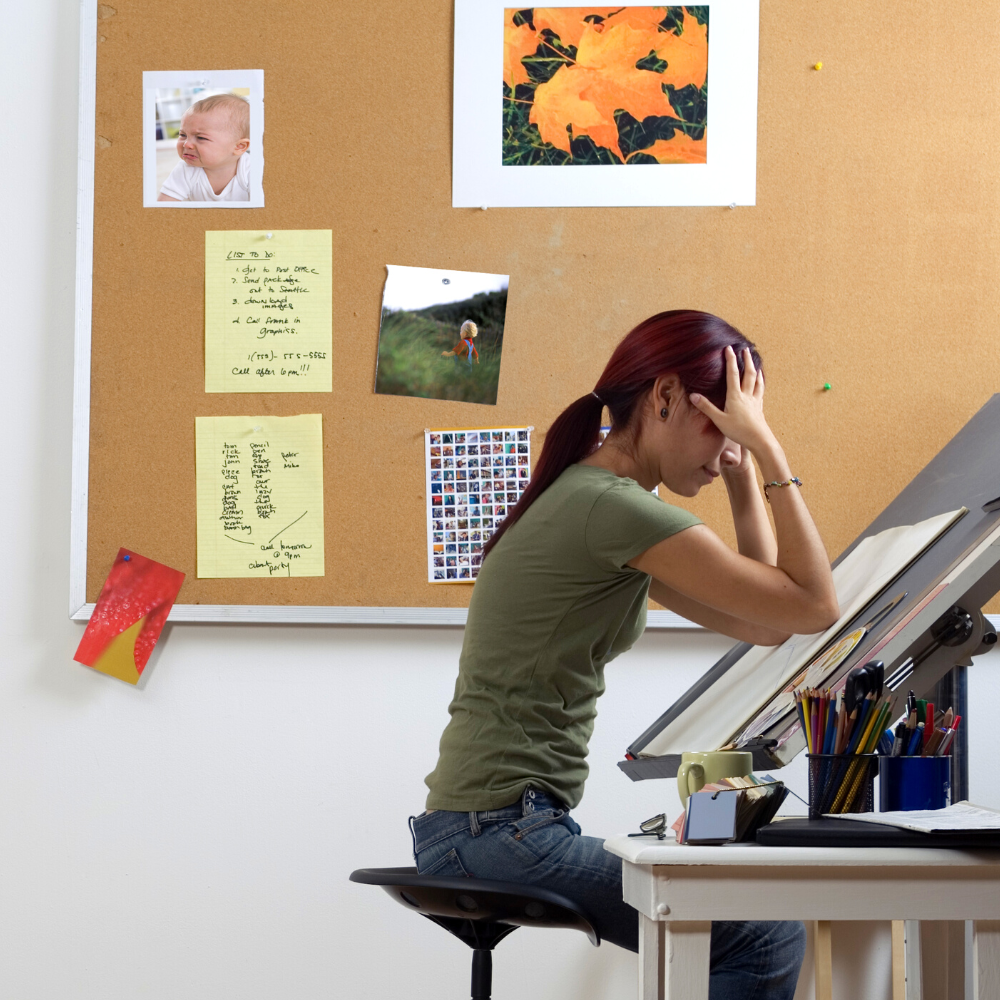
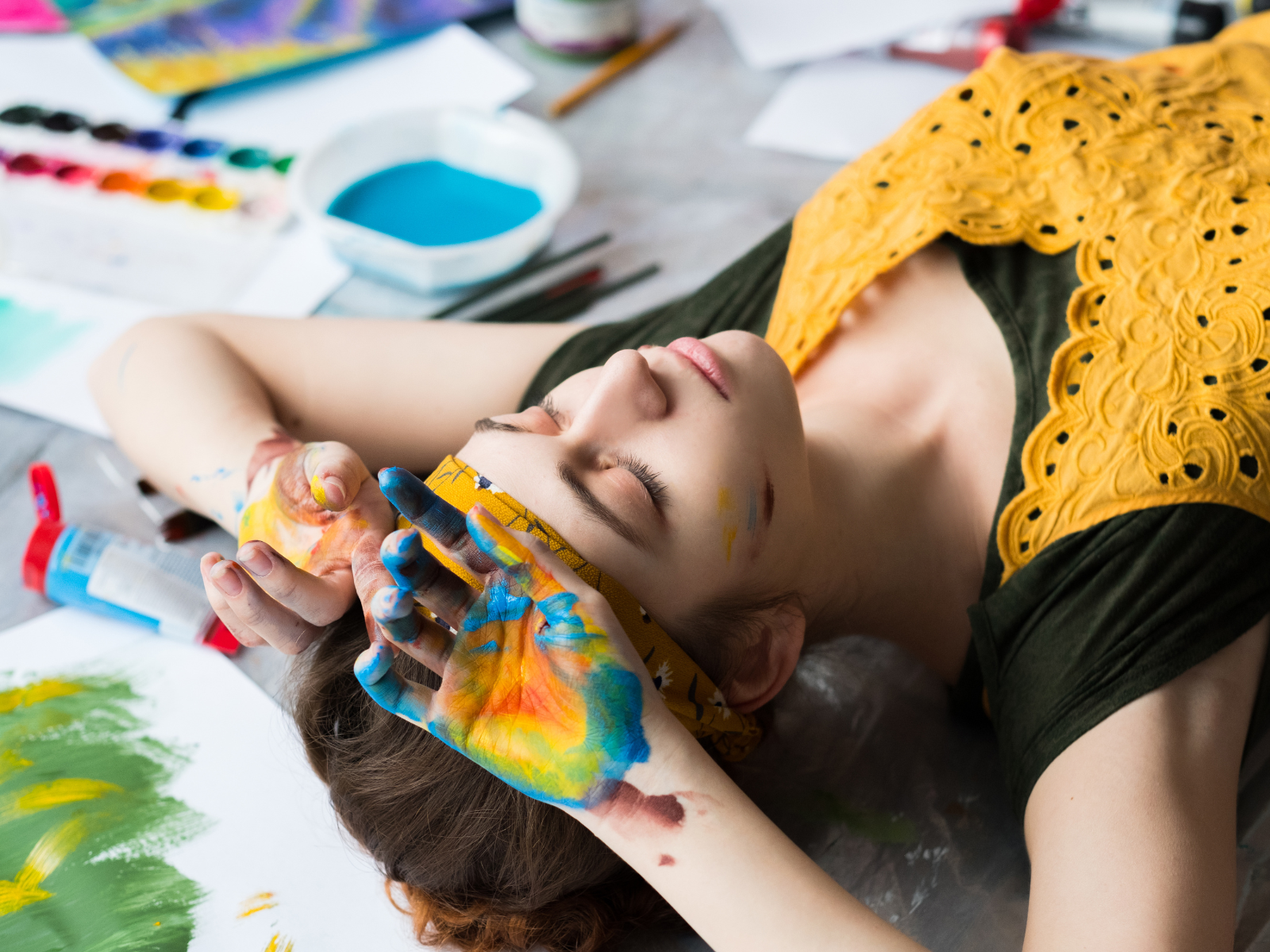
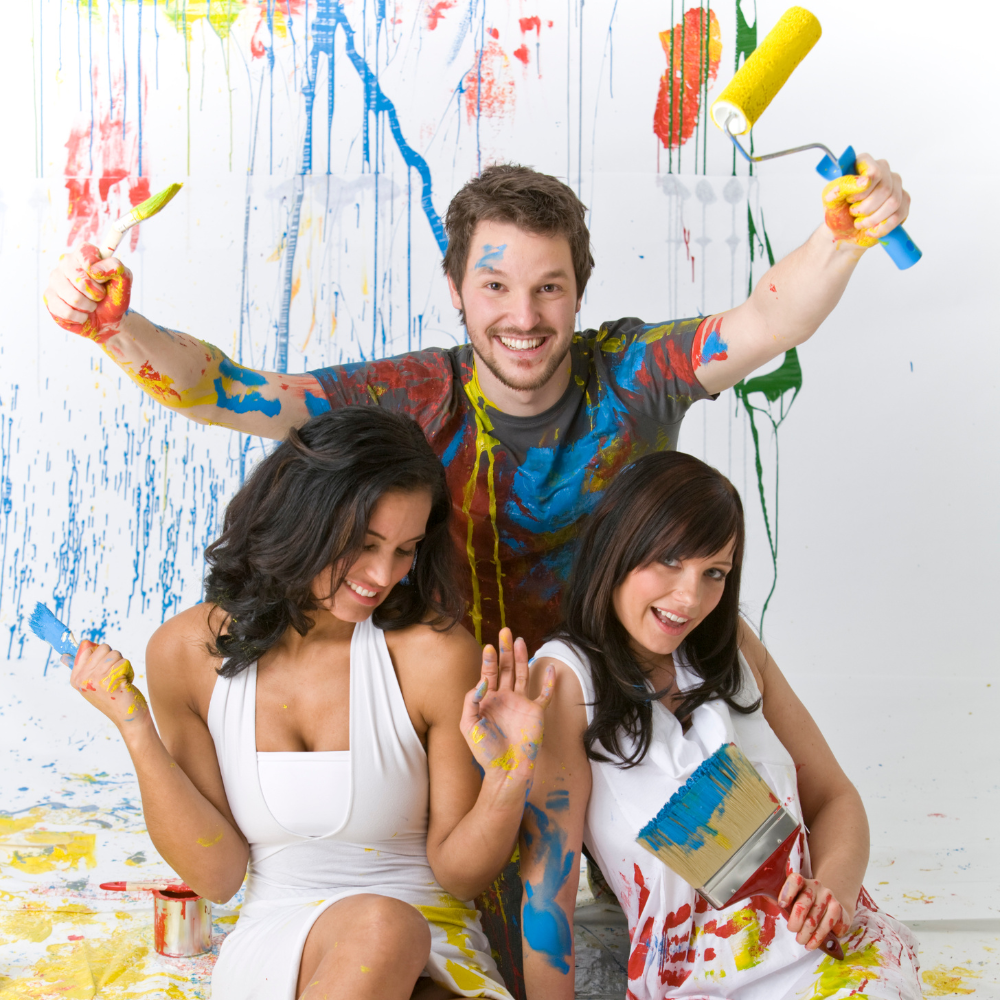
How Art Promotes Wellness
Engaging in creative activities such as painting, drawing, writing, or even coloring books has been shown to have numerous benefits for our overall well-being.
Data and studies have shown that art therapy can decrease stress levels, reduce anxiety and depression symptoms, and improve overall mood.
Furthermore, creating art can stimulate the production of dopamine – the hormone responsible for feelings of pleasure and reward.
As we dive into our creative pursuits, we also tap into our right brain – the side that controls imagination, intuition, and creativity.
This allows us to break free from our repetitive thought patterns and find new perspectives on life.
By engaging in art, we can improve our mental health, promote wellness, and ultimately impress ourselves with newfound clarity and creativity.
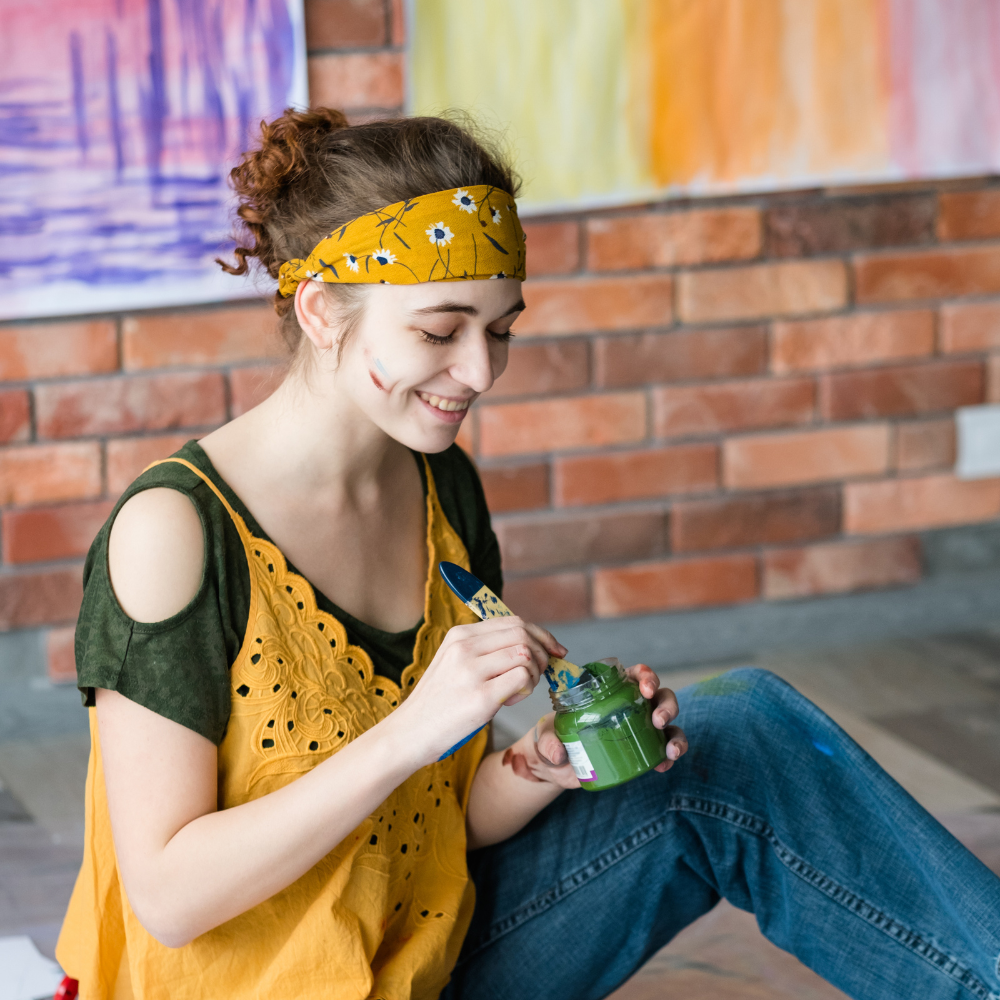

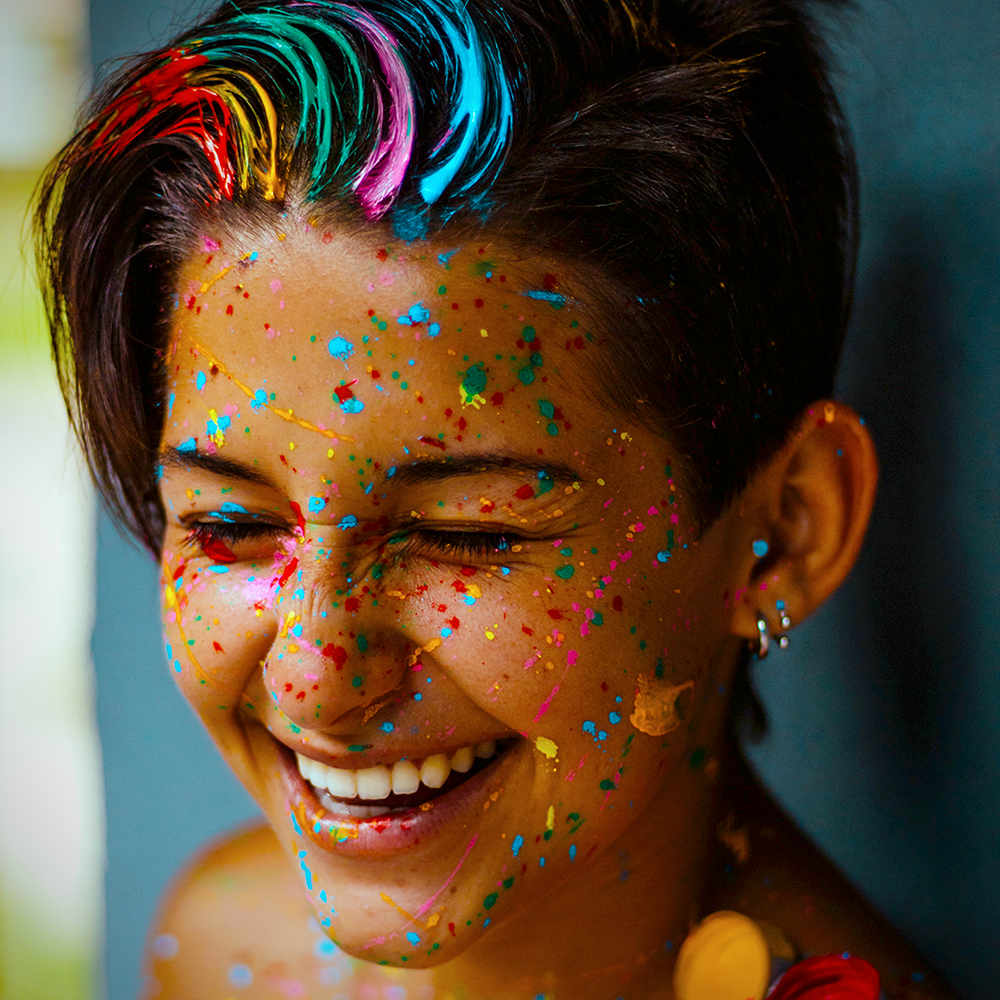
The Therapeutic Benefits of Art
Art therapy is a well-known form of treatment for anxiety, depression, and trauma.
Through the use of artistic mediums and techniques, therapists help individuals tap into their creativity to explore and express their emotions in a safe and non-judgmental environment.
By doing so, individuals can develop coping mechanisms and process their emotions in a therapeutic way.
Moreover, art therapy has been found to reduce stress levels, improve communication skills, and boost self-esteem.
It also provides an outlet for individuals to express themselves freely without feeling the pressure of societal expectations or judgments.
Here are some of the benefits from engaging in creative endeavors:
- Expressing Your Emotions:
Expressing emotions come naturally to artists; you can apply the same techniques in order to help yourself cope with stress.
You can pour your emotions into a creative project, whether it's painting, writing, or any other form of art.
This process can help you understand and communicate your emotions better and also help you process them in a healthy way.
Creating something also gives you a sense of accomplishment as you see your emotions take shape in your art.
- Focusing Your Mind:
Art requires complete focus and helps quieten your mind.
When you're in 'the zone', you're able to push aside all your distractions and think about nothing else but your current project.
This focus helps you step away from the cause of your stress and take a break from worrying.
When you're done, you'll feel like you accomplished something and have the mental satisfaction of a job well done.
- Providing a Sense of Control:
Art gives you control in an environment where you're free.
While you may not have complete control over the world around you, you can take a piece of paper or a canvas, and create something that's solely yours.
This feeling of power can help increase your confidence, and give you a sense of purpose and belonging.
Creating a piece of art gives you the authority to take control of your mental space.
Art therapy is a widely accepted form of therapy that many people have tried.
It works by using creative processes to help people interpret their emotions and work through their issues positively.
Art encourages individuals to let themselves go and “lose themselves” in the present moment.
Artistic creation is thought to replenish the brain's feel-good chemicals while also taking the individual's focus away from their troubles.
As a result, they can experience clarity and begin to heal and grow from their experiences.
- Creating and Maintaining Positive Habits:
Incorporating art into your daily schedule can help you develop healthy habits and create a positive mindset.
Even just taking 15-20 minutes out of your day to make something can help you release the negative thoughts that are holding you back.
Work your creativity into your daily routine or decide to take a class and learn something new.
This not only helps decrease your stress levels but also heightens your focus, creativity, and helps give you a positive outlook on life.
Remember, the goal is not to create a masterpiece, but to express yourself, reduce stress, and promote mental well-being.
So, let go of any judgments or expectations, and allow your creativity to flow because your mind will thank you for it!
Incorporating art into your self-care routine can be a powerful tool for managing stress and promoting overall wellness.
Whether you're painting, writing, or any other form of art, remember to embrace the process and trust in your abilities.
Take a break from the chaos of everyday life and let art be your ultimate stress-buster – no stressing required!
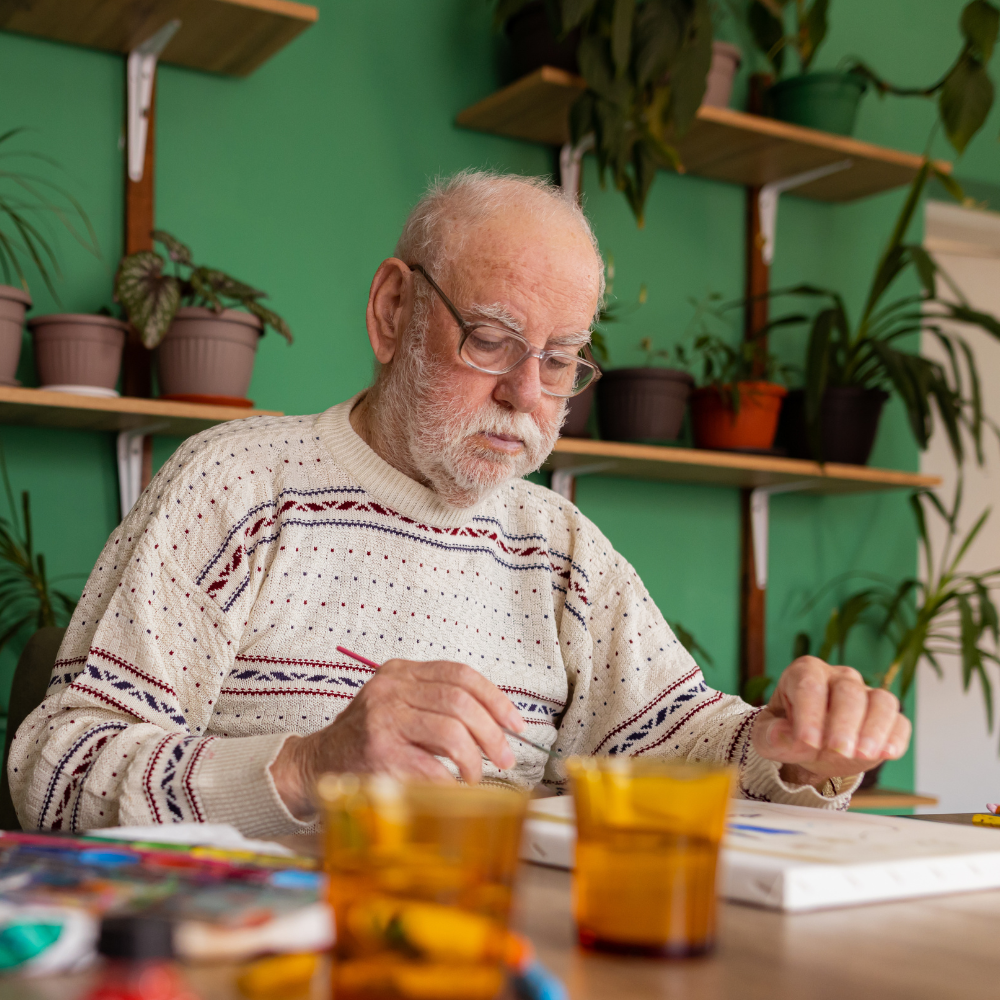
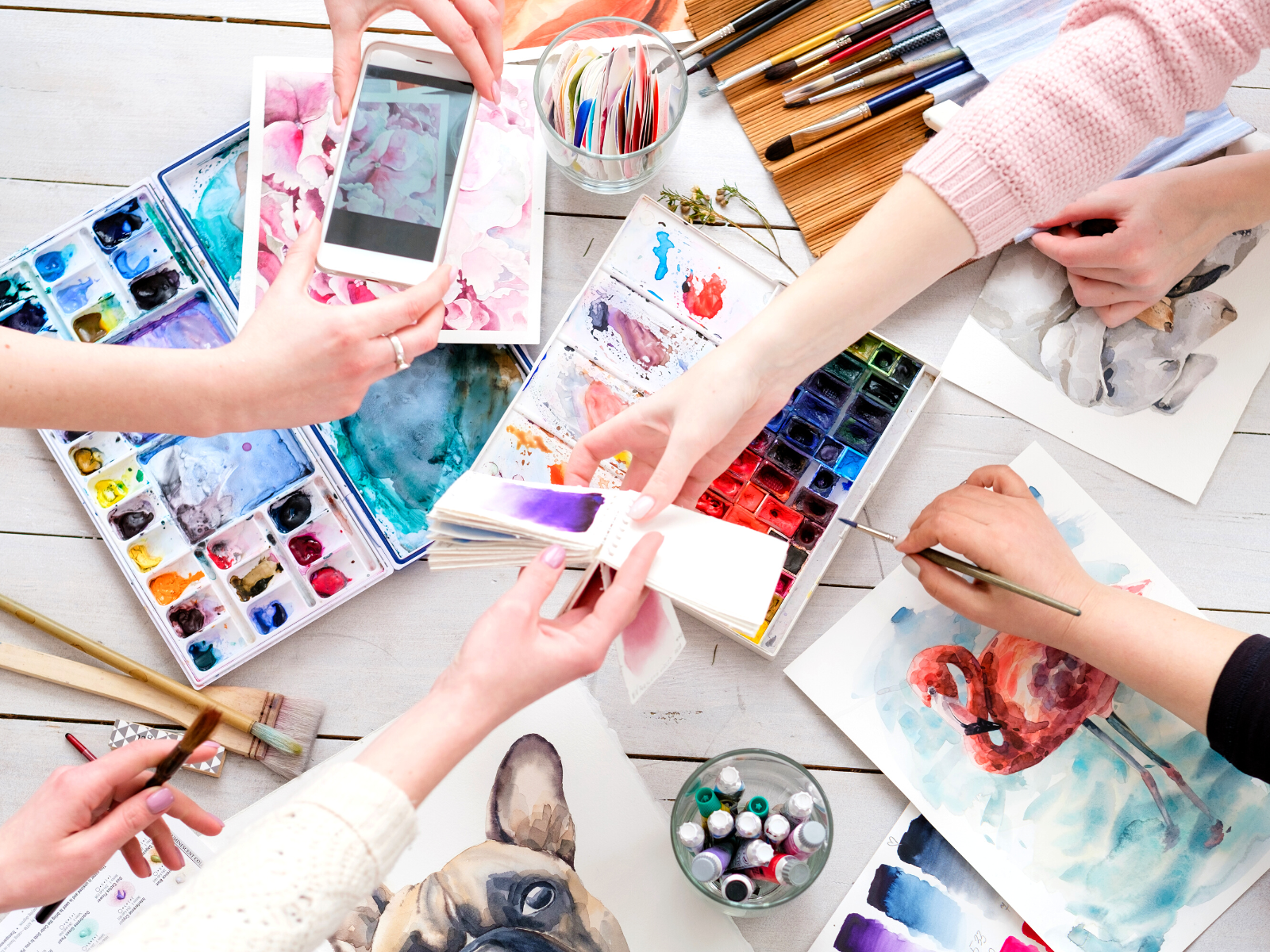

Getting Started with Artistic Expression
It can feel like a herculean feat to start something new, especially when it comes to creative pursuits.
But remember, art is for everyone – you don't need any special talent or experience to reap its benefits.
It's all about allowing yourself the freedom to explore and express, so do what feels right for you!
Here are some ways to get started:
- Spontaneous Art: Grab whatever materials you have at hand – pens, pencils, old magazines for collages – and just start creating. Don't worry about the result; focus on the process.
- Daily Creativity: Incorporate creativity into your daily routine. This could be sketching during your lunch break, singing in the shower, or dancing while making dinner.
- Art as Self-Care: Make your artistic pursuits a part of your self-care routine. Set aside time each week to engage in a creative activity that you enjoy. This could be attending an art class, writing in a journal, or playing an instrument.
- Explore Different Mediums: Don't limit yourself to just one type of art. Try out different mediums and techniques to see what resonates with you. You might surprise yourself!
- Explore Online Content: The internet provides a vast array of resources for exploring different forms of art. From tutorials to virtual galleries, there's no shortage of inspiration and guidance available online, so open a new browser tab and start exploring! Sometimes even ads may be very helpful in providing a variety of creative content and inspiration.
- Join a Community: Joining a community or taking part in group activities can provide motivation, support, and feedback on your artistic journey. It also allows you to connect with others who share your interests. Share photos, download a file of a finished project, review some art creations, and make new friends while doing something creative!
Remember, the key is to have fun and let your creativity guide you.
So, don't be afraid to try new things and get out of your comfort zone.
Allow your art to be a source of joy, relaxation, and inner peace, and watch as it transforms your life for the better.
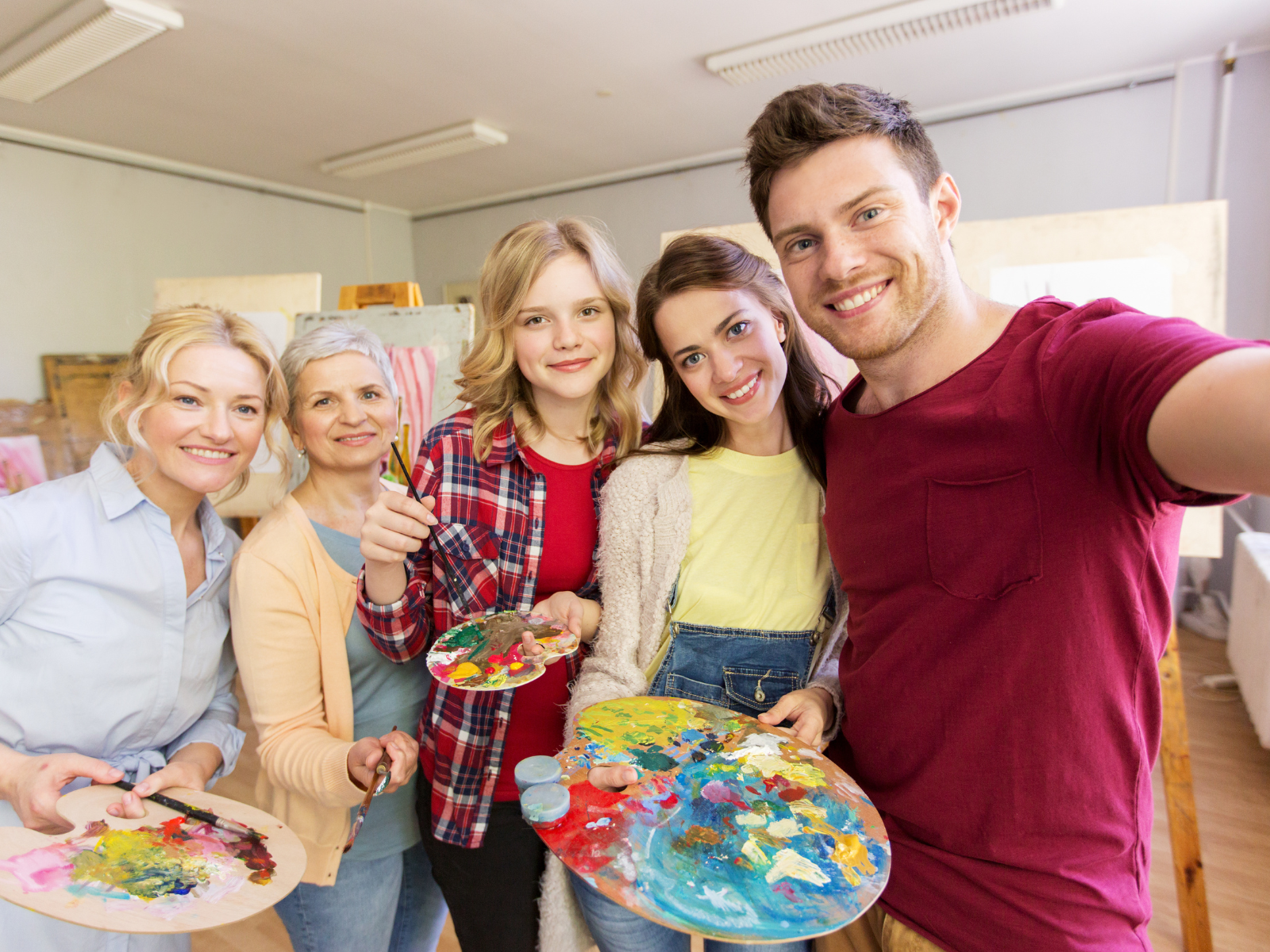

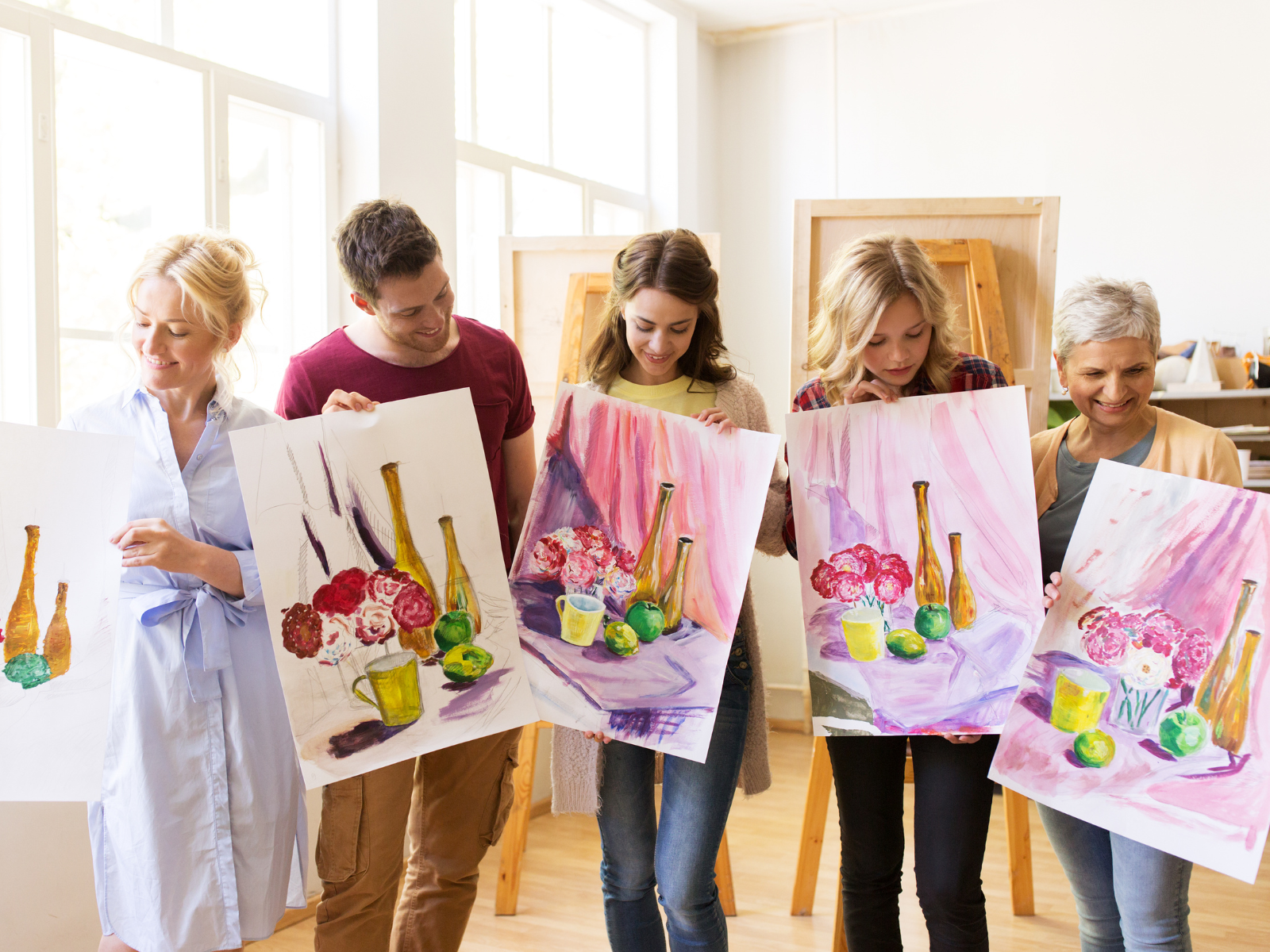
Art: The Ultimate Stress Warrior
Managing stress and anxiety can feel overwhelming at times, but art provides a powerful and accessible way to cope with these challenges.
Art isn't just about creating beautiful things; it's a powerful tool for mental health.
It offers therapeutic benefits to people of all ages and skill sets; incorporating art into your life may be incredibly helpful for those dealing with stress and anxiety.
Art helps people relax, concentrate, and shift their emotions by re-channeling negative feelings in a constructive way.
It also gives them something to look forward to and can be a great source of inspiration.
From helping people with cancer, dementia, and depression, to reducing stress hormones, art is a superpower we all have at our fingertips.
By tapping into our creativity, we can express ourselves, find inner peace and clarity, and develop the resilience needed to navigate life's ups and downs.
Whether it's through painting, singing, writing, decorating cookies, or any other artistic pursuit – let your creativity be your ultimate stress-buster!
So, why not give art a go?
You don't need to be Van Gogh or Banksy to reap the benefits.
Just let your creativity flow and watch your stress ebb.
And remember, in the world of art, there are no mistakes, only unique creations.
It's time to let that creativity flow and reconnect with your inner artist – it could be the stress relief you need!
Now, go forth and create your masterpiece; your mind, body, and spirit will thank you for it!
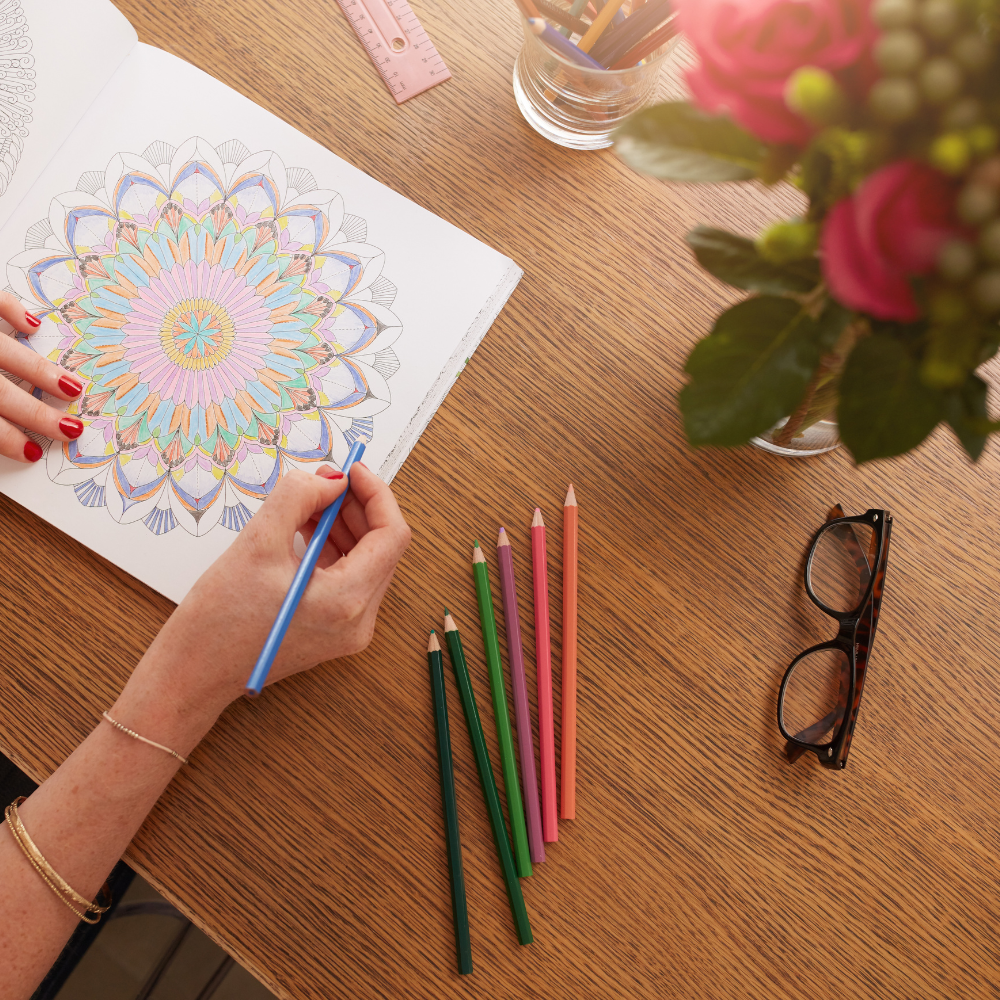


Eager to relieve your stress through creativity? Check out The Minds Journal's video!
Want even more content about creativity and art?
Be sure to check out all of our creative chronicles!
Eager to live your best life?
Check out some of our other articles:
-Self-doubt: enemy to creativity
